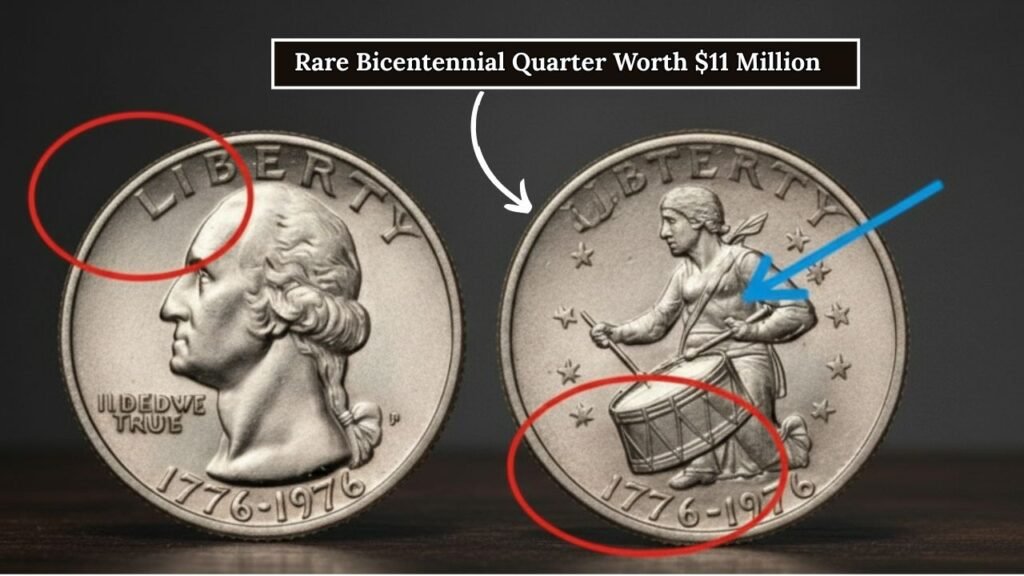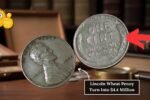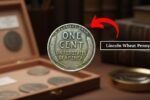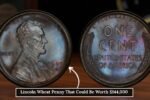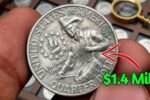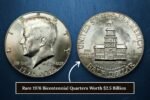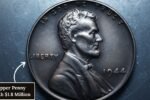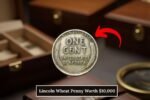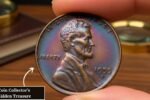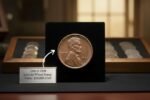The Bicentennial Quarter, minted to celebrate America’s 200th birthday, has recently captured the spotlight due to its astonishing value. While most of these quarters are worth just 25 cents, a rare version could fetch up to $11 million at auction. Even more exciting? This valuable coin could still be hiding in your pocket! In this article, we’ll dive into the history of the Bicentennial Quarter, explain why some are incredibly valuable, and show you how to spot one.
What Is the Bicentennial Quarter?
The Bicentennial Quarter was issued in 1975 and 1976 to mark the United States’ 200th anniversary of independence. Unlike standard quarters, these coins feature a unique design: a colonial drummer on the reverse and a dual date “1776-1976” on the obverse. With over 1.6 billion coins minted, most are common in circulation, but select versions have rare features that make them extraordinarily valuable.
Why Was the Bicentennial Quarter Created?
The U.S. Mint released the Bicentennial Quarter as part of a commemorative series celebrating America’s bicentennial. Alongside quarters, the Mint also produced half-dollars and dollar coins. The quarter’s drummer boy design symbolizes the revolutionary spirit, making it both historically significant and collectible. While most were intended for everyday use, certain minting errors and unique traits have transformed some coins into collector’s treasures.
Why Are Some Bicentennial Quarters So Valuable?
Not every Bicentennial Quarter is a goldmine, but rare versions can fetch millions due to:
| Factor | Description |
|---|---|
| Rare Minting Errors | Coins with double-struck designs or missing mint marks are highly sought after. Even slight offsets in the design can increase value dramatically. |
| Silver Composition | While most quarters are copper-nickel, a limited number were struck in 40% silver for collectors. Silver coins in pristine condition are especially valuable. |
| Condition | Coins graded MS-70 (perfect condition) by services like PCGS or NGC are worth far more than circulated coins. |
| Unique Provenance | Quarters with a famous ownership history or notable story can command higher prices at auction. |
How to Spot a Valuable Bicentennial Quarter
If you think you might own a rare Bicentennial Quarter, look for these features:
| Feature | What to Check |
|---|---|
| Date | Must read “1776-1976” on the front. |
| Mint Mark | Look for “D” (Denver), “S” (San Francisco), or no mark (Philadelphia). |
| Material | Silver quarters feel heavier and have a shinier appearance. |
| Errors | Check for doubled images, missing mint marks, or other irregularities. |
| Condition | Coins with no scratches or wear are more valuable. |
Steps to Identify a Rare Quarter
- Confirm the dual date “1776-1976.”
- Inspect the mint mark location.
- Use a magnifying glass to detect errors.
- Test material for silver content.
- Have it professionally graded by PCGS or NGC.
Where to Find a Bicentennial Quarter
Rare Bicentennial Quarters can still turn up in everyday places:
| Location | Tip |
|---|---|
| Pocket Change | Check coins in jars or wallets at home. |
| Coin Rolls | Ask your bank for unsearched rolls of quarters. |
| Coin Shops | Dealers may have ungraded Bicentennial Quarters. |
| Estate Sales & Flea Markets | Old collections are often sold at these events. |
| Online Marketplaces | eBay and Etsy may list rare coins, but verify authenticity. |
Tips for Safe Collecting
- Use a magnifying glass for detailed inspection.
- Avoid buying from unverified sellers.
- Store potential treasures in protective sleeves.
How Much Is a Bicentennial Quarter Worth?
Value depends on rarity, condition, and material:
| Type | Estimated Value |
|---|---|
| Common Copper-Nickel Quarter | $0.25 |
| Silver Quarter (Uncirculated) | $5–$50 |
| Error Quarter (e.g., Double Die) | $500–$100,000+ |
| Rare High-Grade Silver Quarter | Up to $11 million |
For instance, a 1976-S silver Bicentennial Quarter in perfect condition sold for $11 million in 2023. While most quarters are worth face value, discovering a rare version could result in a life-changing payout.
How to Sell a Valuable Bicentennial Quarter
If you find a rare quarter:
- Get it Appraised: Have a professional numismatist or grading service evaluate it.
- Choose a Selling Platform: Consider auctions, coin dealers, or reputable online marketplaces.
- Work with Trusted Buyers: Auction houses like Heritage Auctions or Stack’s Bowers are reliable.
- Document Everything: Keep records of grading reports and appraisals.
Fun Facts About the Bicentennial Quarter
- Massive Production: Over 1.6 billion coins minted.
- Dual Dates: Only Bicentennial Quarters carry “1776-1976.”
- Collector’s Favorite: Popular due to historical and aesthetic significance.
Why You Should Check Your Change
A rare Bicentennial Quarter could be hiding in plain sight. With a potential value of $11 million, examining your coins is more than just a hobby—it could be a treasure hunt.
Start Hunting Today
Grab a magnifying glass, check your loose change, and see if you can uncover a rare Bicentennial Quarter. Your fortune might be closer than you think.
FAQs
Are all Bicentennial Quarters valuable?
No, most are worth only 25 cents, but rare errors or silver versions are highly valuable.
How can I tell if my quarter is silver?
Silver quarters are heavier and shinier compared to standard copper-nickel coins.
What is the rarest Bicentennial Quarter?
1976-S silver quarters in perfect MS-70 condition are the rarest and can sell for millions.
Can I sell my quarter online?
Yes, but use reputable platforms and verify the buyer to avoid scams.
Should I get my coin professionally graded?
Yes, grading confirms authenticity and significantly increases its resale value.
